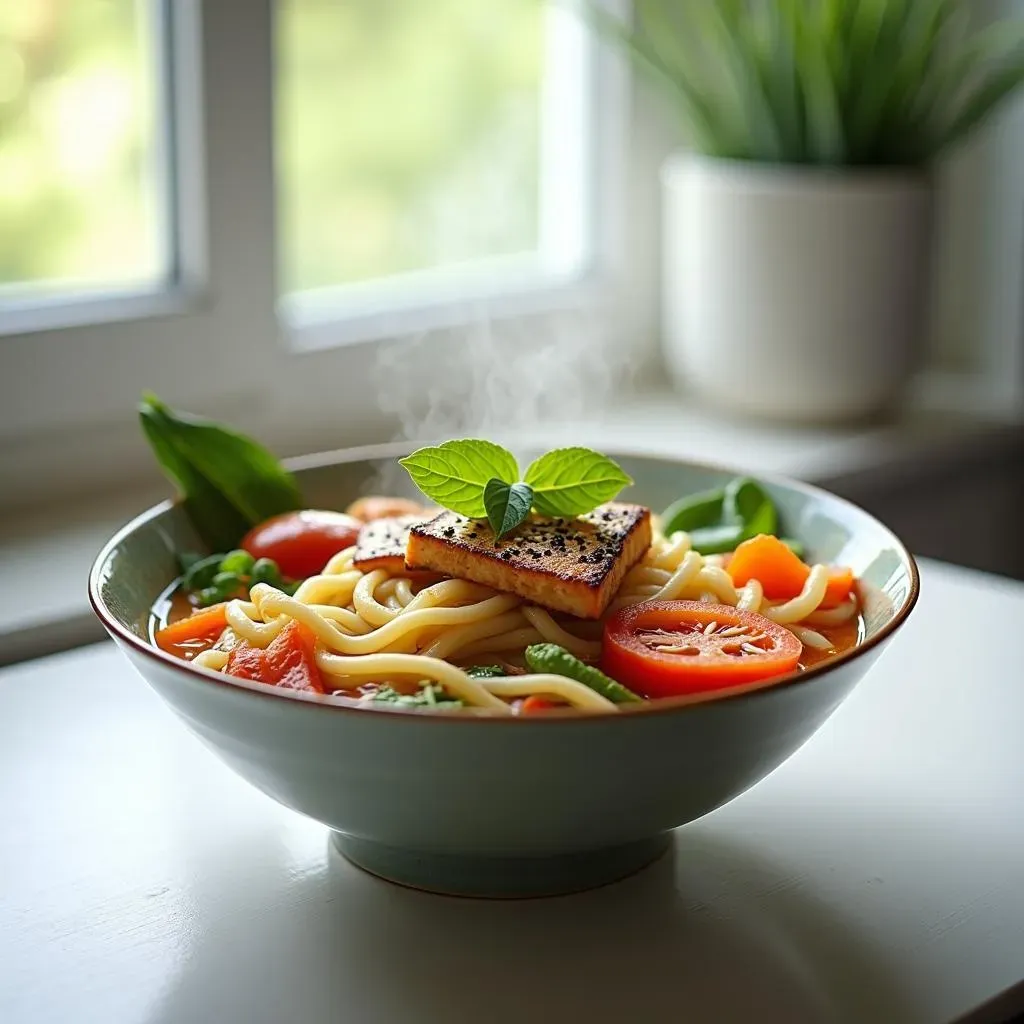Table of Contents
Ever wonder if your comforting bowl of soup noodles is actually good for you? We all love that warm, satisfying feeling a good noodle soup gives, but are soup noodles healthy? It's a question many of us ponder as we slurp down those delicious strands. The truth is, not all noodle soups are created equal, some can be packed with nutrients, while others might be more of an occasional treat. This article will guide you through the world of soup noodles, exploring various types, from the thin rice noodles to the thick udon, we will check their nutritional content and how they impact your health. We will also look at the soup itself, and what you can add to make it better. We'll also tackle how to make smart choices to keep your meal balanced and healthy. So, grab your chopsticks, and let's discover how to make your next bowl of soup noodles both delicious and nutritious.
Noodle Types and Their Nutritional Value
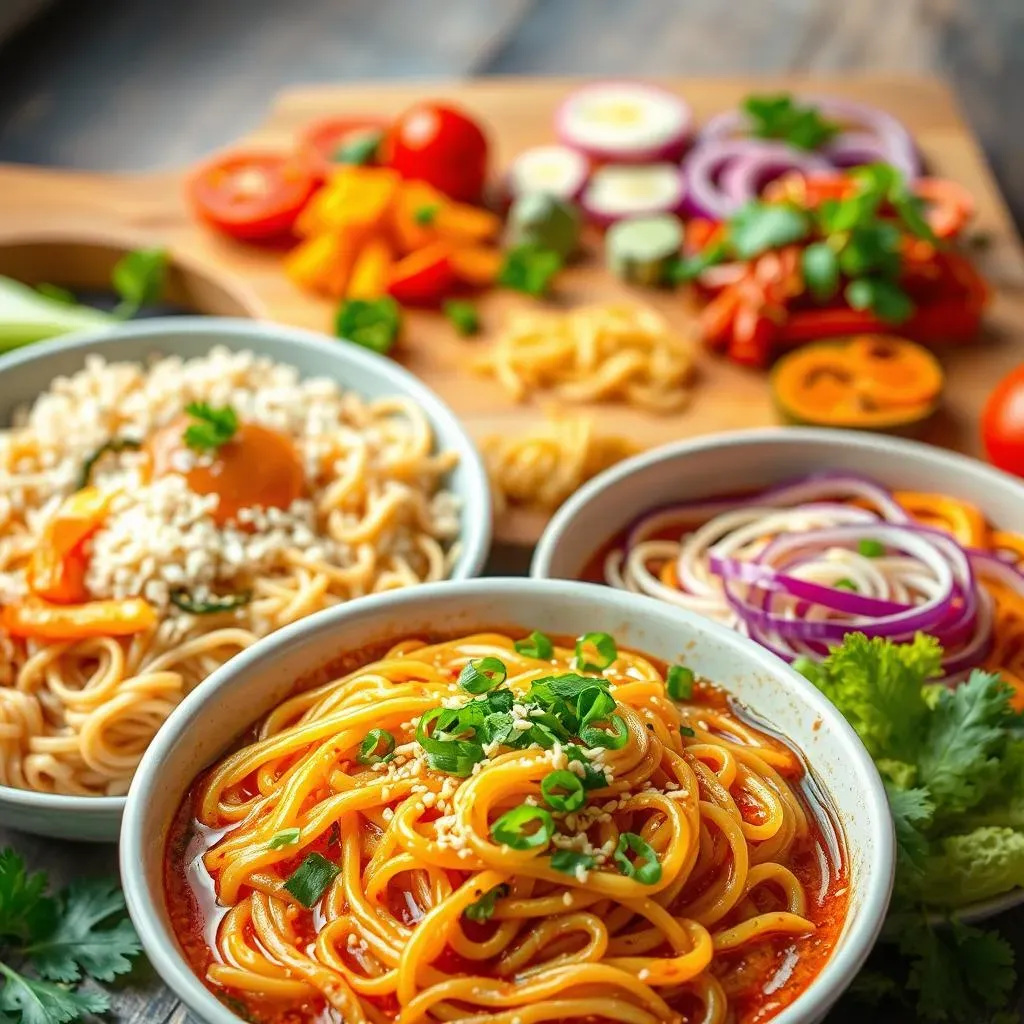
Noodle Types and Their Nutritional Value
The Wide World of Noodles
so you're staring at a shelf full of noodles, right? It's like a carb rainbow, but what's actually in them? Let's break it down. You've got your classic wheat noodles, like spaghetti's skinnier cousins, ramen, and the thick, chewy udon. These are often made with refined flour, meaning they might not be the most nutrient-packed choice. Then there are the rice noodles, which are lighter and naturally gluten-free, they come in all shapes and sizes. Think of the thin vermicelli or the wide, flat rice noodles. Each type has its own personality and, of course, nutritional profile. It's not as simple as all noodles being the same, that's for sure.
Beyond Wheat and Rice
But wait, there's more! We can't forget about the other options that are getting popular these days. There are noodles made from beans, like chickpea pasta, or lentils, these tend to be higher in protein and fiber. Then you have the veggie noodles, like zucchini or sweet potato noodles, which are low in carbs and calories, but they're also packed with vitamins. And the wild card: shirataki noodles, made from konjac root, they are super low in calories and high in fiber, although some people might find their texture a bit odd. Knowing these differences is key to making a healthy bowl of soup. It’s like having a superpower of knowledge to pick the best noodles for your soup.
Noodle Type | Main Ingredient | Key Nutrients | Considerations |
|---|---|---|---|
Wheat Noodles (Ramen, Udon) | Refined Wheat Flour | Carbohydrates, Some Protein | Can be lower in fiber; watch portion size |
Rice Noodles | Rice Flour | Carbohydrates | Gluten-free; can vary in fiber |
Chickpea/Lentil Noodles | Chickpea/Lentil Flour | Protein, Fiber | Good source of plant-based protein |
Veggie Noodles | Vegetables (Zucchini, Sweet Potato) | Vitamins, Fiber | Low in calories and carbohydrates |
Shirataki Noodles | Konjac Root | Fiber | Very low in calories; unique texture |
Soup Choices: Balancing Broth and Addins
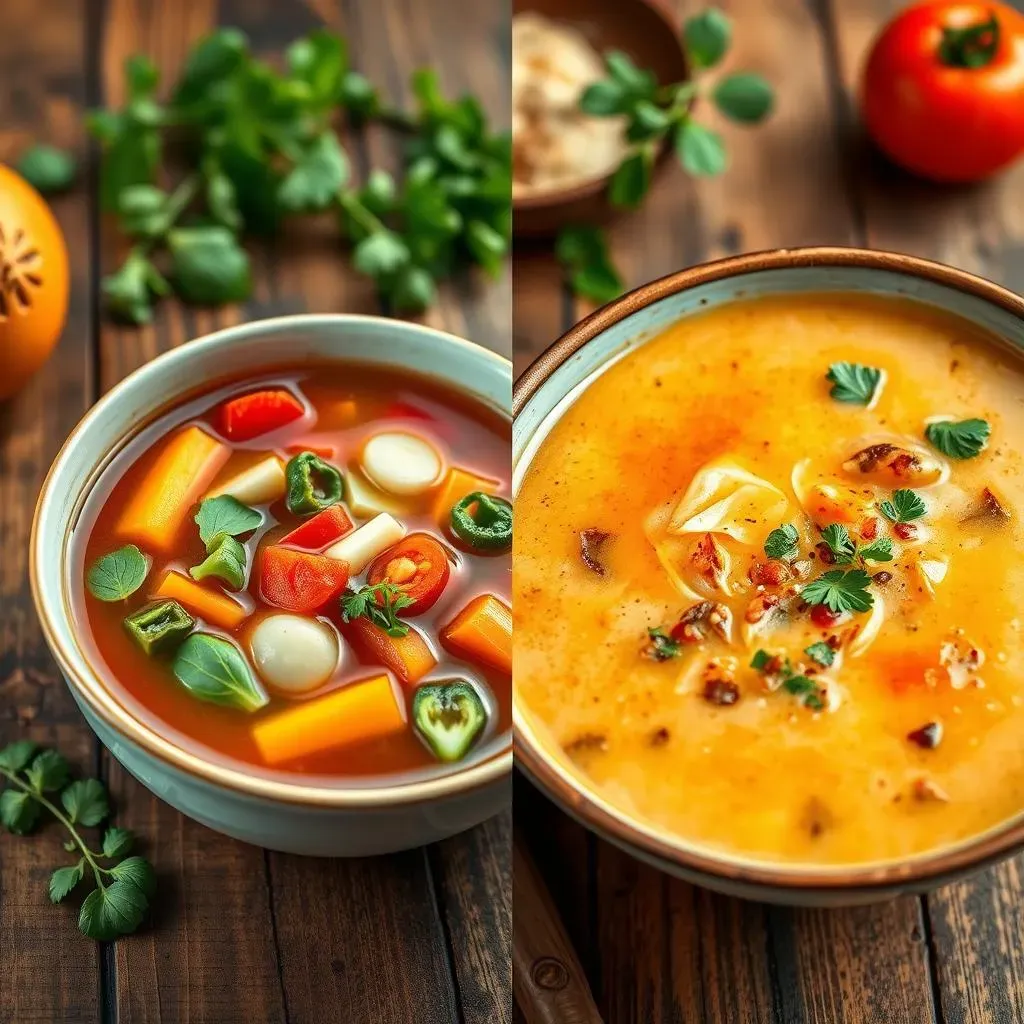
Soup Choices: Balancing Broth and Addins
Broth Basics: Clear vs. Creamy
so you've picked your noodles, now let’s talk soup base! It's like the stage for our noodle performance. You've got your clear broths, like chicken or vegetable, these are generally lighter and lower in calories, perfect if you're keeping an eye on things. Then you have the creamy broths, like coconut curry or miso, which are richer and more flavorful, but they tend to be higher in fat. It's all about balance. Think of it like choosing between a light, refreshing drink or a thick, hearty smoothie. Both are good, but they give you different things.
The Magic of Add-Ins
Now, for the fun part: the add-ins! This is where you can really boost the nutritional value of your soup. Loading up on veggies is a great idea, think spinach, carrots, broccoli, mushrooms, they add fiber, vitamins, and a satisfying crunch. Protein is important too, you can add chicken, tofu, or even a boiled egg. If you're feeling fancy, herbs and spices can add a ton of flavor without extra calories. The add-ins are where you take your soup from "meh" to "amazing!" It’s your chance to create a meal that’s both delicious and good for you.
Broth Type | Characteristics | Nutritional Notes | Best For |
|---|---|---|---|
Clear Broth (Chicken, Vegetable) | Light, transparent | Lower in calories and fat | Everyday meals, lighter options |
Creamy Broth (Coconut, Miso) | Rich, opaque | Higher in fat and calories | Heartier, more flavorful meals |
Add-Ins | Vegetables, Protein, Herbs, Spices | Adds fiber, vitamins, and flavor | Customizing for nutritional needs |
Are Soup Noodles Healthy? Smart Swaps and Portion Control
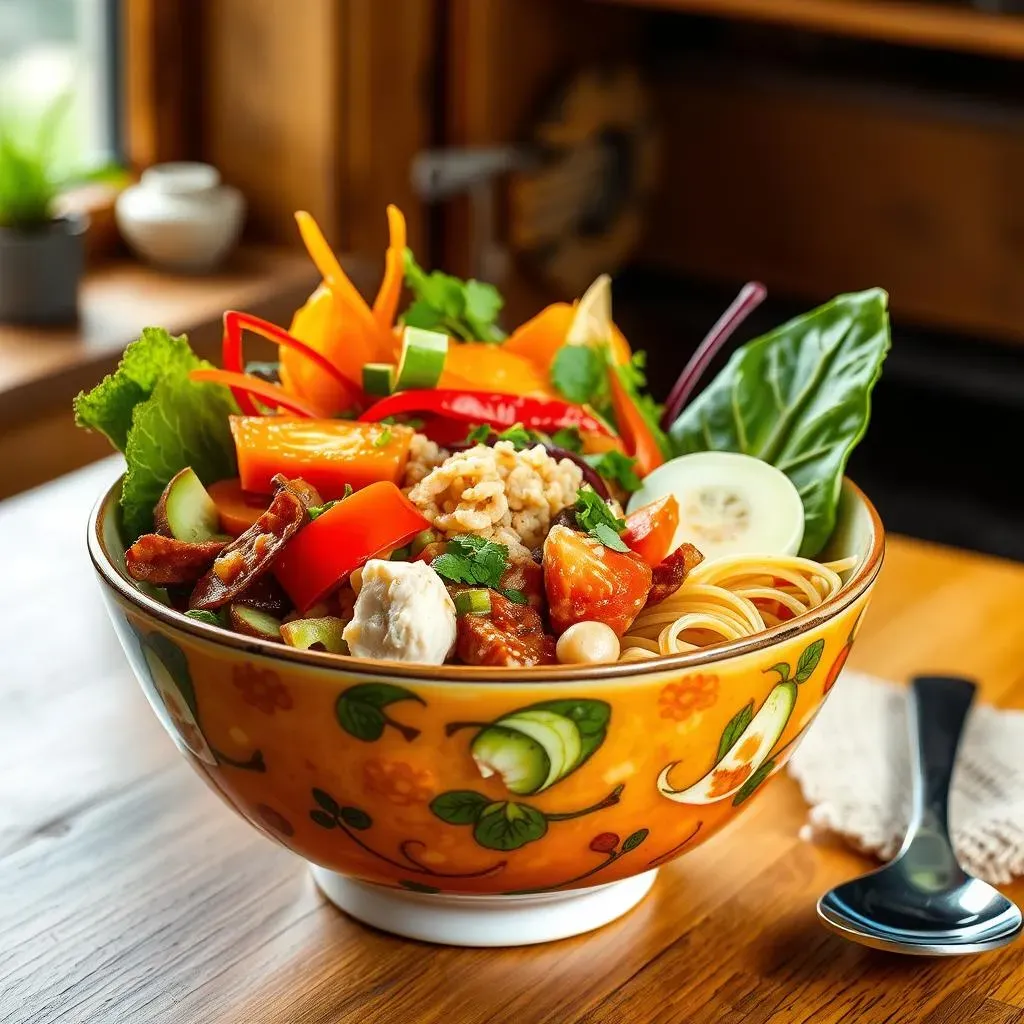
Are Soup Noodles Healthy? Smart Swaps and Portion Control
The Truth About Soup Noodles
so are soup noodles healthy? It's not a simple yes or no. It really depends on what you put in your bowl. Think of it like this: a plain white bread sandwich isn't the same as a whole-grain sandwich loaded with veggies and lean protein. The same goes for noodles. A bowl of instant ramen might not be the best for your health, but a homemade soup with whole wheat noodles, lots of veggies, and some chicken? That's a different story. It's all about the choices you make, not just the noodles themselves.
Smart Swaps for a Healthier Bowl
Want to make your soup noodles healthier? Let's start with the swaps. Instead of refined white noodles, choose whole wheat, chickpea, or lentil noodles for more fiber and protein. Swap out creamy broths for clear broths to cut down on fat. Load up on veggies, seriously, don't hold back! Think of it as adding color and nutrients to your bowl. Adding lean protein, like grilled chicken or tofu, can also make your meal more satisfying. And don't forget about spices and herbs, they add flavor without the extra calories. It's like giving your soup a healthy makeover.
Swap This | For This | Why It's Better |
|---|---|---|
Refined White Noodles | Whole Wheat, Chickpea, or Lentil Noodles | More fiber and protein |
Creamy Broths | Clear Broths | Lower in fat |
Few Veggies | Lots of Veggies | More fiber and vitamins |
Processed Meats | Lean Protein (Chicken, Tofu) | Healthier protein source |
Portion Control: The Key to Balance
Even with the healthiest ingredients, portion control is important. It's easy to get carried away with a big bowl of soup, especially when it’s cold outside. Using a smaller bowl can help you to manage your portion size. Also, be mindful of how much noodles you are adding, try to balance your noodles with lots of veggies and protein. It's about enjoying your soup without overdoing it, a mindful approach will help you feel satisfied without overeating. Remember, it's all about balance, enjoying your favorite foods, without going overboard.
Making Soup Noodles a Healthy Meal
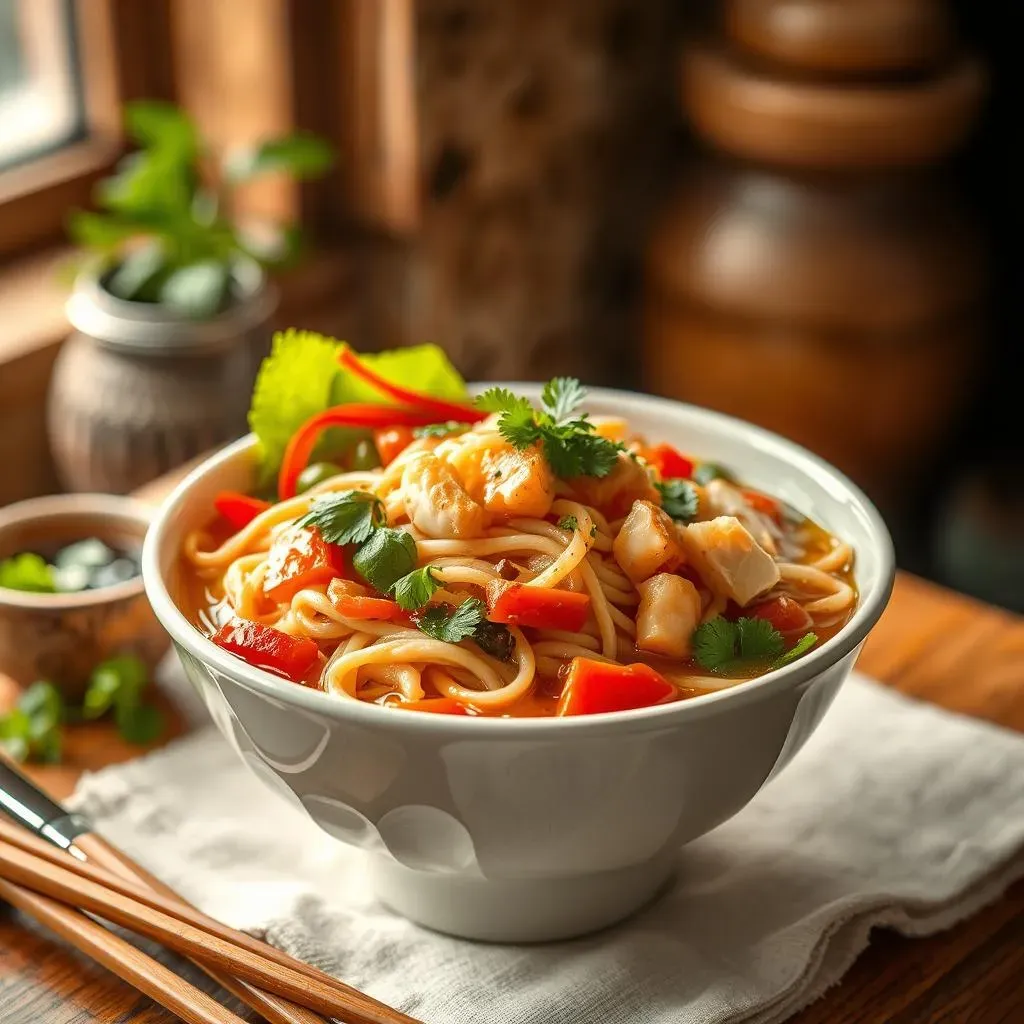
Making Soup Noodles a Healthy Meal
Building a Balanced Bowl
So, you're ready to make some seriously healthy soup noodles? Awesome! It's all about putting the right pieces together, like building with LEGOs, but tastier. Start with your base, pick a broth that's not too heavy, like a clear chicken or veggie broth. Then, choose your noodles wisely, go for whole wheat, chickpea, or lentil options, they'll give you more fiber and protein. Don't be shy with the veggies, load up on all the colorful ones you can find, spinach, carrots, mushrooms, you name it. And finally, add some lean protein, like grilled chicken, tofu, or even some beans. It's like creating a masterpiece in a bowl, each ingredient playing its part.
Cooking Methods Matter
How you cook your soup noodles also makes a difference. Instead of frying the noodles, try boiling or steaming them, this will keep the calories and fat in check. When it comes to veggies, try to avoid overcooking them, you want them to be a little bit crunchy to preserve their nutrients. If you're adding protein, make sure it's cooked properly. And when you are adding herbs and spices, do not add too much salt. It's all about being mindful of how you prepare your ingredients. Cooking is like a science, precise measurements and techniques can really impact the final result, and the same applies to our soup.
Component | Healthy Choices | Things to Watch Out For |
|---|---|---|
Broth | Clear broths (chicken, veggie) | Creamy broths (high in fat) |
Noodles | Whole wheat, chickpea, lentil | Refined white noodles (low in fiber) |
Veggies | Colorful, varied types | Overcooked veggies (nutrient loss) |
Protein | Lean options (chicken, tofu, beans) | Processed meats (high in sodium) |
Cooking Method | Boiling, steaming | Frying (adds calories and fat) |
Listening to Your Body
Last but not least, pay attention to how your body feels after eating your soup noodles. Does it make you feel energized and satisfied, or does it leave you feeling bloated and sluggish? If you're not feeling great, it could be a sign that something in your soup isn't working for you. It might be the type of noodles, the broth, or even the amount of salt you're using. It's like having a conversation with your body, it gives you clues on how you can make things better. So, be mindful of your body’s response, and make adjustments as needed to create a soup that nourishes you inside and out. Remember, what works for one person might not work for another, so it’s all about finding what makes you feel your best.
Wrapping Up: Making Smart Choices with Soup Noodles
So, are soup noodles healthy? The answer, as we've seen, isn't a simple yes or no. It really boils down to the choices you make. Opting for whole grain noodles, loading up on veggies, and being mindful of your broth and portion sizes can transform your soup from a guilty pleasure to a genuinely nutritious meal. Remember, enjoying your favorite foods is all about balance and making informed decisions. Don't be afraid to experiment with different noodles and ingredients to discover your own perfect, healthy bowl. It's about making each spoonful count, nourishing your body, and satisfying your cravings at the same time.
